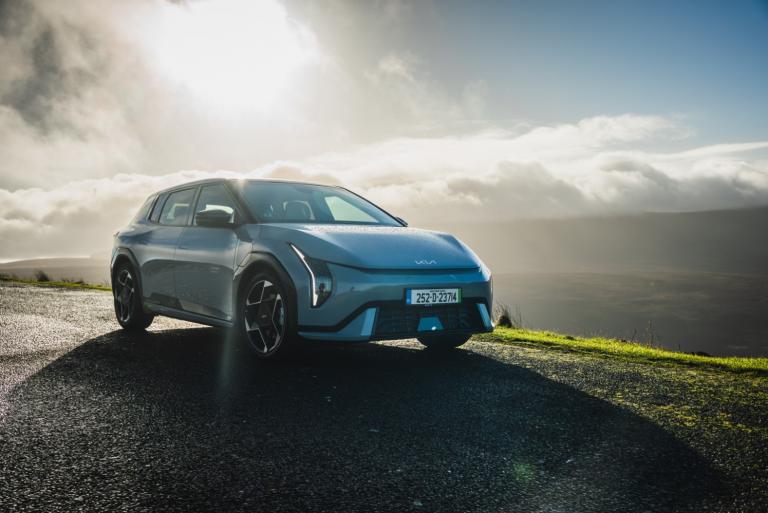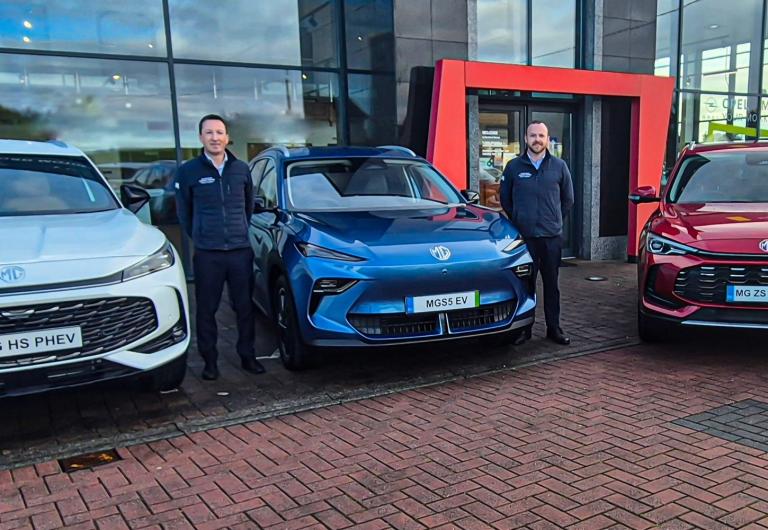Toyota cleans up with Rav 4
Published on 25 July, 2021
Overview
The Rav 4 is very important to Toyota, both in sales and as a crucial vehicle in the battle that the Japanese company is waging against diesel while promoting its petrol/hybrid powertrains and at the same time putting serious switching to fully electric vehicles on the long finger.
If any vehicle has revelled in diesel powertrains in the past it was the Rav 4, which has become one of the firmest favourites as a family SUV since it was first launched in 1994, when, for many years, it was known for its spare wheel mounted on the rear door. .
Its much loved status has been even more firmly cemented in the first six months of this year when sales of the Rav 4 Increased by an incredible 86pc over last year making it number three in the overall chart after Toyota’s own Corolla and the massively popular Hyundai Tucson which has regained the number one spot with more than 5pc of the market..
Toyota points out that Ireland is still one of the most, if not the most, most diesel oriented countries in Europe with oil-burners accounting for 36pc of the new market against 32pc for petrol. Pure hybrids, of which most would be Toyota, account for 16.5pc with plug-in hybrids and full electric vehicles sharing the rest. Overall, Toyota is the top selling marque in this country with four models in the top 10.
Toyota’s main public argument against diesels is their high-polluting status, in particular NOx emission which does most of the damage to people’s health. They go to great lengths to show how their “self-charging” vehicles travel in electric mode for considerable time giving zero tail-pipe emissions and even taken as a whole their pollutants are just a very small fraction of that associated with diesel. Toyota can present figures that show the hybrid Rav 4 has 92pc less NOx than its average diesel competitors.
After coming back from Connemara in the black BMW X3 I immediately swapped into the Toyota Rav 4. The press car was the 2WD Sport Black Edition at €44,700 which apart from some light grey stitching on the instrument panel and front seats was unrelenting dark inside and out. It was a pity because black doesn’t show the Rav 4 off to its best as a large family car. It becomes more industrial and functional than stylish. It was the same inside the large cabin when very supportive front seats gave way to far more sparse fare for the back seat passengers. It’s a big car, especially when mounted on the black-painted alloy wheels whose size don’t help the overall smoothness of the ride. But the Rav 4 always looks like it can go anywhere even if the test car didn’t have the AWD which is available for €46,360 in the Sol version, €48,345 in the Sport Edition and €51,070 in the Platinum. The entry level for the Rav 4 is the Luna model at €39,120.
I was impressed by the excellent assistance and safety systems on board as well as the overall levels of other aids for the driver. It makes the Rav 4 a very safe car for the family even at the lower grades. Across all EuroNCAP categories the Rav 4 comes very near the top of the class.
The massive load area of 542litres is flat and easy to use. However, I found the infotainment system fairly bothersome and a bit of a let down.
The only powertrain available in Ireland is the 2.5litre petrol hybrid engine which develops 218hp in conjunction with a small electric motor. There is a towing capacity of 1,650kg for AWD models and half that for FWD. Fuel consumption rivalled that of the diesel BMW X3. Toyota claims it would be 5.7l/100km for the test car and 5.8 for the AWD versions. I got 6 l/km on a mix of motorway and urban driving and would be happy with that. There is a hybrid battery warranty of up to 15 years with an annual health check.
The new Rav 4 is stiffer with a lower centre of gravity than previous models which gives for sharper steering. It didn’t have the power, torque or confidence of the BMW X3 or the Audi Q5 but it is considerably cheaper and will hold its value exceptionally well over the years. Although it doesn’t look anything like as sharp as the new Hyundai Tucson, a smaller and less expensive rival which has largely stayed faithful to diesel, it still has a good presence – once you get above the full black clothes. The Rav 4 will always be in demand as the figures since the beginning of the year proves.
I like the passion of Toyota for the hybrid option. The company claims that since they began their hybrid journey 24 years ago they have reduced C02 emissions by 140m tonnes which, apparently, is equivalent to 14,000 Eiffel Towers. It was often said that Toyota’s cars sacrificed incredible reliability and build quality for personality. There are still elements of that to be seen in the Rav 4. Yet it makes a great family package if you really want a SUV; but it’s a pity that so many heads are turned by them. There are some very stylish options among hatchbacks and estates that deserve consideration.
Opel reveals latest version of its Astra
Talking of cars worth looking at, Opel is reinventing itself since it has teamed up with Peugeot and Citroen in the massive Stellantis group. Now it has revealed in all its glory, the all-new sixth generation Astra.
A descendant of the legendary Kadett, the success story of the Astra, Opel’s bestseller, began 30 years ago. Dynamic as never before, with “sheer, taut surfaces”, and sporting the new brand face, the distinctive Opel Vizor, the Astra will be available in petrol, diesel and for the very first time, as a plug-in hybrid.
The all-new Astra will arrive in Ireland in early 2022, with prices and equipment levels to be revealed closer to launch. The new Opel Astra will launch as a sporty five-door with a low-slung look, yet it gains more interior space than its predecessor.
Thanks to especially short front overhangs, the new Astra is only 4mm longer than the previous model, despite the considerably increased wheelbase of 2,675mm (+13mm).
The new Astra’s practical boot with adjustable floor still offers the driver and four passengers 422 litres of luggage volume.
Latest Reviews

Kia EV4 Video Review

CarsIreland Dealership Awards 2025: Celebrating Excellence Across Ireland

Rochford Motors Joins MG Network as New West of Ireland Dealer